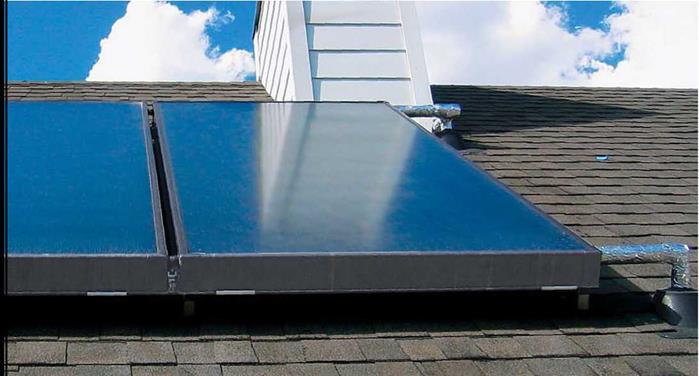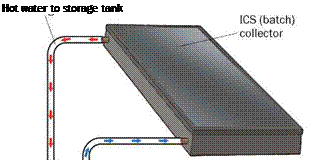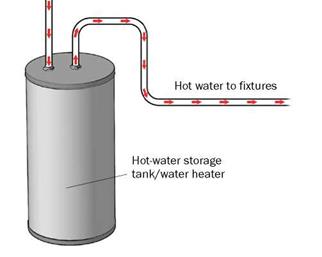Solar Hot Water
■ BY SCOTT GIBSON

|
T |
here’s nothing like a looming energy crisis to bring history full circle. More than a century has passed since Clarence Kemp, a Baltimore heating-equipment deal-
er, came up with the first commercial solar water heater. His patented Climax Solar Water Heater, which sold for $25, was a hit.
More-efficient designs soon came along, and by 1941, half the houses in Florida had solar hot-water systems. Roof-mounted solar collectors were common in California, too. But natural-gas discoveries in the West and a utility blitzkrieg to sell more electricity in
Florida brought the solar hot-water business to its knees.
Does the story sound familiar? It should. A spike in energy prices and short-lived government incentives created a solar hot-water boomlet in the 1970s and 1980s. The interest withered when energy prices dropped and government subsidies dried up, sticking homeowners with systems that didn’t always work and couldn’t be serviced due to the lack of qualified technicians. Rising energy prices are once again making solar attractive. But this time around, the industry






is offering more-dependable, better-designed hot-water systems that give homeowners in all parts of the country a reliable way to cut energy bills.
Heating water with the sun can be pretty simple. In the right climate, a 55-gal. drum painted black and perched on the roof provides plenty of hot water. Collectors like that, called batch heaters, are producing hot water all over the world. But technology has a lot more to offer these days, making solar hot water feasible for any region of the country and for just about any application, from swimming pools and hot tubs to domestic hot water and even space heating.
There Are Many Ways to Heat Water, but Keeping It Hot Is Another Story
Although solar hot-water systems vary widely in design and complexity, they share some basics. The sun heats water, or another liquid capable of transferring heat, in a collector. Specialized materials called selective coatings are made to absorb available solar radiation. They include black chrome, black nickel, and aluminum oxide combined with nickel or titanium nitride oxide.
Once water is hot, it’s either moved to a storage tank or piped directly to where it’s needed. That much seems simple, but the trick is making sure the water doesn’t cool down too much or, worse, freeze. To cover the wide range of temperatures and solar potential that hot-water systems can encounter, manufacturers offer a variety of equipment and plumbing options.
In general, systems are either active or passive, meaning they operate with or without electric pumps. They also can be direct or indirect (sometimes called open loop or closed loop), which means the collectors heat the water that’s used in the house or, alternatively, heat a nonfreezing transfer medium that in turn heats potable
In their simplest form, these systems consist of a batch collector (also known as integrated collector storage, or ICS) that’s pressurized by the household-water supply and exposed to the sun. When a hot-water tap is opened, water is forced from the batch collector to a conventional water heater or directly into the distribution system. Relatively easy to install, these systems are suitable only for warm – weather areas. Solar Direct (www. solardirect. com) sells a passive-system kit for about $1,400.
water in a heat exchanger. In virtually all cases, solar-heated water is routed through a conventional water heater, where it gets a temperature boost (if necessary) before being distributed to its point of use.






Leave a reply